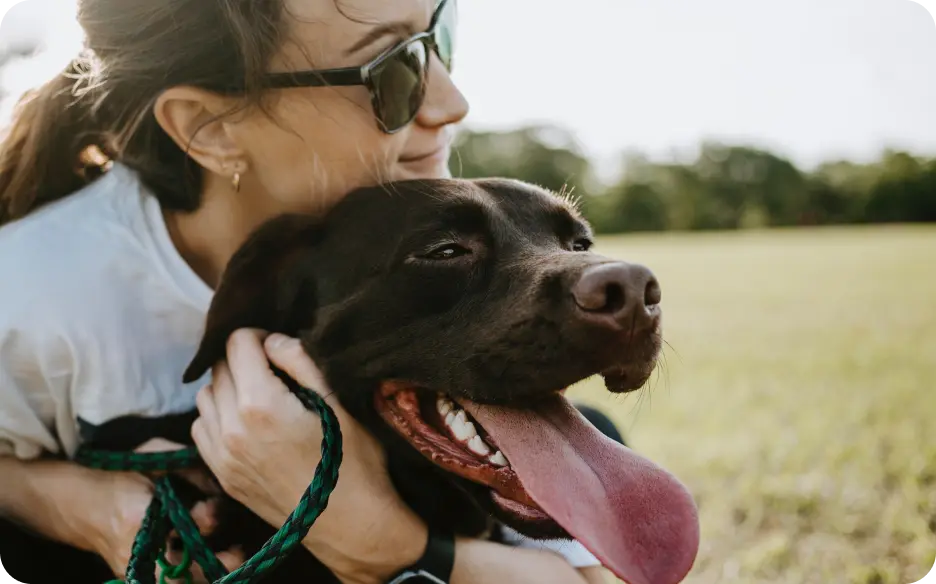When it comes to keeping cool, humans have a straightforward method: we sweat. But how do our canine companions manage to stay comfortable? Understanding how dogs regulate their body temperature is crucial, especially as warmer weather approaches.
Canine Sweating Mechanisms
Dogs do not sweat in the same manner as humans. While humans have sweat glands distributed throughout their bodies, dogs mainly have sweat glands located in their paw pads. This limited sweating means dogs primarily rely on other methods to cool down.
Panting: The Primary Cooling Method
The main way dogs cool down is through panting. When a dog pants, they intake air, and the moisture on their tongue and in their mouth evaporates. This evaporation helps cool their blood and, subsequently, their entire body. Increased panting is often observed after exercise or on hot days, as dogs work to regulate their internal temperature.
Behavioral Adaptations to Heat
In addition to panting, dogs exhibit behavioral adaptations to manage heat. They often seek shady spots or lie down on cool surfaces to cool off. If a dog feels particularly warm, they might dig at the ground or search for water. These instinctual behaviors help them lower their body temperature naturally.
Understanding Sweat Glands
The sweat glands in dogs, primarily located in their paw pads, serve a different purpose than cooling. While they can aid in grip and traction, this sweating is minimal and insufficient for cooling in warm temperatures. If you notice your dog’s paw pads are wet, it’s likely due to a moist environment or their own efforts to cope with heat.
Recognizing Signs of Overheating
Awareness of the signs of overheating is vital. Dogs can suffer from heatstroke, which can be life-threatening. Symptoms include excessive panting, drooling, lethargy, or confusion. If any of these signs are present, it’s crucial to act quickly. Move your dog to a cooler area, provide fresh water, and apply cool (not cold) water to their fur to help lower their body temperature.
Hydration is Key
Proper hydration is essential for keeping dogs cool. Ensure your dog always has access to fresh water, especially on hot days. Offering ice cubes as treats or freezing dog-safe broth into ice cubes can provide a refreshing snack.
Adjusting Exercise Routines
During the summer months, adjusting exercise routines can help prevent overheating. Walk your dog during the cooler parts of the day, such as early morning or late evening, making outings more enjoyable for both of you.
Special Considerations for Certain Breeds
Certain breeds are more susceptible to overheating. Brachycephalic breeds, such as bulldogs and pugs, have shorter snouts, making panting less effective. Owners of these breeds should provide ample shade and water and limit strenuous activities on warm days.
Conversely, dogs with thick fur or heavy undercoats may also struggle to cool down. While their coats provide insulation in winter, they can trap heat in summer. Regular grooming helps manage their coats, allowing for better airflow to the skin.
Cooling Products and Weight Management
Cooling vests or mats can be beneficial for active dogs or during travel. Ensure these items are specifically designed for dogs and made from breathable materials.
Maintaining a healthy weight is crucial, as obesity can hinder a dog’s ability to regulate body temperature. A balanced diet and regular exercise can help them cope with heat more effectively.
Observing Your Dog’s Comfort Level
Recognizing when your dog is comfortable or too hot is essential for their well-being. Dogs have unique personalities; some may enjoy basking in the sun while others prefer shade. Pay attention to your dog’s behavior and adjust their environment as needed. If they seek cooler spots or show signs of distress, it’s time to help them cool down.
Ensuring a Safe Environment
Creating a safe environment for your dog during hot weather is vital. Never leave them in a parked car, even for a few minutes. The temperature inside a vehicle can rise rapidly, leading to heatstroke or even death. Always be mindful of the weather and its effects on your dog.
Seeking Professional and Community Support
If uncertain about your dog’s health or how to manage their well-being in hot weather, consult your veterinarian for personalized advice based on your dog’s breed, age, health status, and lifestyle.
Connecting with other dog owners can also provide valuable insights. Local pet clubs, online forums, and social media groups are excellent resources for sharing experiences and knowledge.
Understanding how dogs sweat and cool down is just one aspect of responsible pet ownership. By being attentive to your dog’s needs, you can help ensure they remain comfortable and healthy throughout the year. With the right knowledge and preparation, your furry friend can enjoy every season to the fullest.



